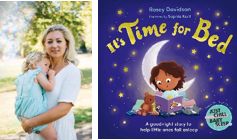The school holidays aren’t just a fun time for your kids; they’re a blast for your family dog too! With endless games, outdoor adventures, and little playmates who never seem to tire, your dog is likely loving every minute. But as the holidays come to an end and the kids head back to school, your dog’s joyful routine of constant play, open garden doors, and midday walks suddenly changes. So, how can you make sure this transition doesn’t throw your dog’s well-being off balance?
The last thing you need during back-to-school chaos is a stressed-out pup. Here are some tips, tricks, and expert advice from Pooch & Mutt, with insights from Vet Linda, to ensure your dog stays happy and fulfilled during this time.
How school holidays affect your dog
School holidays can feel like they last forever, and for your dog, they bring a major shift in their daily routine. But what exactly changes for them?
- Later starts. No school run means the whole family gets to sleep in, but your dog, used to an 8 am breakfast, now has to adjust to a later start to the day.
- More playful days. With the kids at home, your dog becomes the center of attention. They have permanent playmates who match their energy levels and never tire of throwing the ball.
- A fuller house. Whether it’s your kids or their friends coming over, your dog gets used to a busier household. They enjoy meeting new faces and having more people around to play with.
- More time in the garden. If the weather’s nice, the back door to the garden might stay open all day, giving your dog constant access to outdoor fun and toilet breaks without having to ask.
- More family adventures. With everyone at home, you’re likely to plan more outings, and your dog gets to join in. Whether it’s a hike, a trip to the beach, or a visit to a dog-friendly pub, your dog gets used to spending more time out and about.
How back-to-school impacts your dog’s well-being
When school starts again, the house goes from lively and chaotic to quiet and calm. You might not notice the change, but your dog will. Suddenly, they’re left alone more often, with fewer people to see and everyone too busy to play. This can lead to:
- Stress
- Separation anxiety
- Boredom (which might cause destructive behavior)
- Hyperactivity
Helping your dog transition smoothly
As you prepare your kids for the back-to-school season, it’s a good idea to get your dog ready too. By easing them into the new routine early, you’ll make the transition smoother for everyone.
Vet Linda shares her top tips for helping your dog adjust:
“A new routine can be stressful for a dog, especially if they’re young or naturally anxious. If your dog isn’t used to being left alone during the school run, they might struggle with the change. This can lead to destructive behaviors like digging, chewing, or barking. To prevent this, start getting your dog used to being alone for short periods during the school run. Exercise them beforehand to tire them out, and give them something to do while you’re away, like a food puzzle or a chew toy. For very anxious dogs, consider starting calming supplements a week or so before the change.”
Here are a few more things you can do in the weeks leading up to the first day of school:
- Prioritize early mornings. Start getting up earlier in the last couple of weeks of the holiday. This helps reintroduce early toilet breaks and feeding times, preparing your dog for the new schedule.
- Practice leaving them at home. With everyone back at work and school, your dog will have to adjust to being alone more often. Start practicing by leaving them alone for short periods while you run errands, gradually increasing the time you’re away.
For added peace of mind, you might consider:
- Taking them for a walk first thing in the morning.
- Asking someone to drop by to let them out or keep them company.
- Investing in enrichment toys and treats to keep them entertained.
- Setting up a camera to check on them during the day.
- Leaving on background noise to simulate a busy household.
- Revisit toilet training. After having open access to the garden, your dog might need a refresher on toilet training. Ensure they get their early-morning toilet break, and consider asking someone to let them out during the day in the first few weeks.
- Prioritize exercise. After a holiday filled with family adventures, back-to-school means returning to regular suburban walks. Make sure your dog still gets plenty of exercise to keep them happy and stimulated.
- Focus on mental enrichment. Keep your dog mentally stimulated with toys, chews, and treat puzzles to distract them from the sudden quiet.
- Create a calm evening atmosphere. As everyone winds down in the evenings, help your dog understand that it’s time to relax too. Establish a routine of evening cuddles and naps to signal that the day is ending.
- Show lots of love and attention. Life gets busy, but don’t forget to spend quality time with your dog. Bonding, cuddles, and love will help them adjust to the new routine and keep them feeling secure.
Final thoughts
As dog parents, it’s important to consider how changes like the back-to-school season affect our pets. By taking a few extra steps to prepare and support your dog, you can ensure they stay happy and calm during the transition. Calming dog food, treats, and supplements can also be great tools to help your dog adjust to the new routine. Remember, a little extra care can go a long way in making your dog feel safe and loved.















